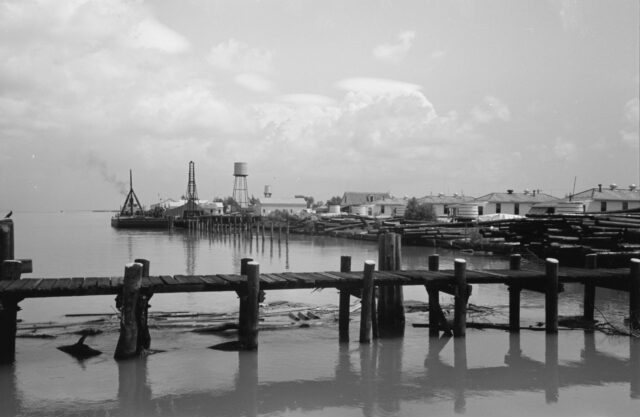One of the world’s most pressing modern problems is climate change. Rising sea levels, extreme weather events, and other climate-related factors are having profound effects on the global population, forcing many inhabitants to abandon their homes. The result is an increasing number of modern ghost towns due to natural disasters. From coastal villages succumbing to erosion to high-altitude ski resorts rendered obsolete by melting glaciers, these modern ghost towns are the results of escalating threats of environmental conditions.
Valmeyer, Illinois

Valmeyer, Illinois, was once a thriving Midwestern town but sadly became a ghost town following a catastrophic climatic event. In the early 1990s, the town faced unprecedented flooding along the Mississippi River. As you can imagine, in the aftermath of the Great Flood of 1993, Valmeyer’s infrastructure experienced extensive damage.
Faced with the increasing risks of future floods, the roughly 900-person community chose to relocate to higher ground, abandoning their homes and businesses. By doing so, the original Valmeyer, with its memories and landmarks, was left eerily deserted, with only about 10 homes left standing on what was called “the high side of town.”
Burrwood, Louisiana

Once a thriving community on the Gulf of Mexico, Burrwood, Louisiana, faced a slow but inescapable disappearance due to the gradual erosion of its coastal landscape. Located off of the Mississippi River, the town faced rising sea levels, subsidence, and the constant encroachment of the Gulf’s waters.
Burrwood had experienced a long history of environmental disasters, including hurricanes in both 1917 and 1965. The latter, known as Hurricane Betsy, was for a long time considered the worst hurricane to hit the New Orleans area until 2005, when that title was then given to Hurricane Katrina.
Vunidogoloa, Fiji

Vunidogoloa, once a vibrant coastal village in Fiji, now stands as a prime example of the devastating impacts of climate change. The small village once housed around 150 residents who faced rising sea levels, powerful storm surges, and increasingly frequent cyclones that ultimately eroded their shores and submerged their homes. They were forced to relocate inland in 2014, becoming the first in a string of coastal villages in Fiji to relocate as a result of environmental factors.
Holland Island, Maryland

Holland Island, situated in the Chesapeake Bay, Maryland, is a stark example of environmental change. Once a thriving community in the late 19th century, one that included dozens of homes, a post office, a church, a school, and a dance hall, Holland Island faced a relentless battle against erosion and rising sea levels.
Residents of the island witnessed their homes and livelihoods washing away under the powerful forces of nature. Despite efforts to fortify the shoreline, the erosion and disappearance of the island was inevitable, and by the early 20th century, most of its structures had vanished into the bay. The last house on the island eventually collapsed into the waters in 2010.
Historic Shasta and Helena, California

The historic mining towns of Shasta and Helena in California were founded in the 19th century on the back of the Gold Rush era. Both communities thrived during this period, but as the gold deposits dwindled and economic fortunes shifted, both towns faced a decline that led to their eventual abandonment. For a long time, these ghost towns were managed by California’s Department of Parks and Recreation.
However, both Shasta and Helena would be decimated by unpredictable and untameable wildfires. Dry conditions and gusty winds caused these historical sites to be razed to ashes, with all that remains being the brick facades and iron shutters of the few buildings not built from wood.
Chacaltaya Ski Resort, Bolivia

The Chacaltaya Ski Resort in Bolivia, perched high in the Andes, was once renowned as the world’s highest ski area. Opening in the 1930s, the resort enjoyed decades of business and popularity. However, with rising temperatures and changing weather patterns, the snowy Chacaltaya glacier that the resort was built upon disappeared completely in 2009.
Read more: The World’s Biggest ‘Ghost Mall’ Has Been Brought Back From the Dead
With the loss of the glacier, the ski resort, once bustling with winter sports enthusiasts, faced an abrupt closure, leaving behind abandoned slopes and facilities.
